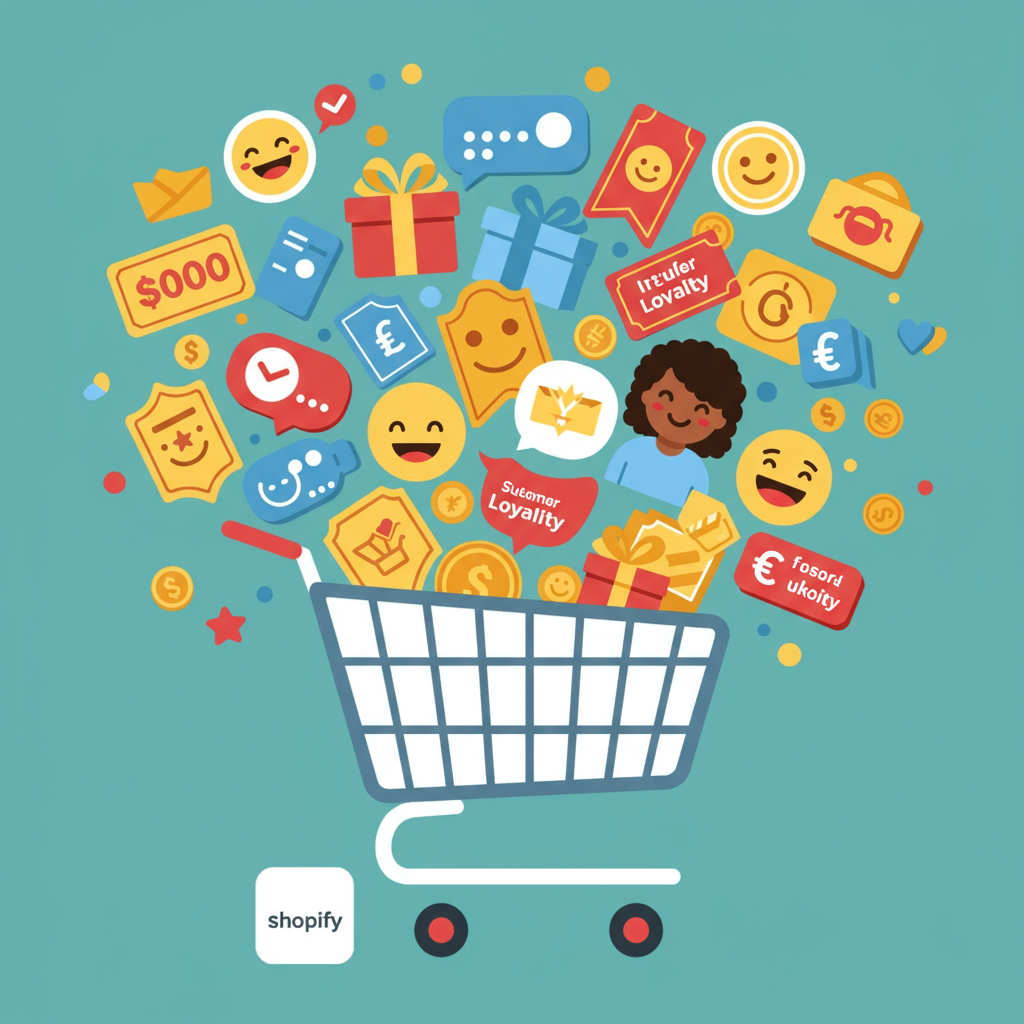Transforming One-Time Buyers into Lifelong Advocates for Your E-commerce Store
As a merchant, I’m constantly looking for ways to grow my Shopify store and ensure its long-term success.
One strategy that has consistently proven its worth, in my experience, is building a robust customer loyalty program.
It’s not just about attracting new customers; it’s fundamentally about retaining the ones you already have.
Think about it: acquiring a new customer can cost significantly more than keeping an existing one.
This is where a well-executed loyalty strategy truly shines, transforming one-time buyers into lifelong advocates for your brand.
I’ve seen firsthand how a strong loyalty program can dramatically increase customer lifetime value (LTV).
It encourages repeat purchases, boosts average order value (AOV), and fosters a deeper, more meaningful connection with your brand.
Beyond just sales, loyalty programs turn your customers into your biggest cheerleaders.
They’ll share their positive experiences, refer new customers, and actively engage with your brand on social media, creating organic growth.
So, how do we go about building such a powerful system for our Shopify store?
First, let’s consider the different types of loyalty programs you can implement, as each has its unique benefits.
The most common is the points-based system, where customers earn points for every dollar spent, which can then be redeemed for discounts or exclusive products.
Then there are tiered programs, which reward customers with increasing benefits as they reach higher spending thresholds, like silver, gold, or platinum tiers.
Some brands even opt for paid loyalty programs, offering exclusive perks for an annual fee, creating a highly committed VIP community.
Value-based or community programs focus on non-monetary rewards, like early access to new products or invitations to exclusive events, fostering a sense of belonging.
When designing your program, I always advise starting with clear, measurable goals. What do you want to achieve?
Is it increased retention, higher average order value, or more customer referrals? Your specific goals will shape your program’s structure and rewards.
Next, think deeply about the rewards. What truly motivates your customers and aligns with your brand’s values? Discounts are popular, but exclusive access, free products, or even charitable donations can be powerful incentives.
Define your earning rules: How do customers accumulate points or progress through tiers? Purchases are standard, but consider rewarding sign-ups, social shares, product reviews, or even birthday bonuses.
Equally important are the redemption rules. Make it clear how and when customers can redeem their rewards. Avoid overly complex systems that frustrate users.
Branding is crucial; your loyalty program should feel like an authentic extension of your Shopify store’s identity. Use your brand’s voice, visuals, and overall aesthetic.
Simplicity is key. If your program is too complicated to understand, customers won’t engage with it. Keep the rules straightforward, transparent, and easy to follow.
For Shopify merchants, implementing a loyalty program is made incredibly easy thanks to a wealth of dedicated apps available in the Shopify App Store.
Apps like LoyaltyLion, Smile.io, and Yotpo Loyalty & Referrals offer comprehensive solutions that integrate seamlessly with your store’s existing setup.
These apps handle everything from point tracking and reward redemption to customer segmentation and detailed analytics, simplifying the entire process.
Once your program is set up, the next vital step is promotion. Don’t assume customers will just find it; you need to actively market it.
I recommend prominently featuring your loyalty program on your website, perhaps with banners, pop-ups, or a dedicated page explaining the benefits.
Utilize your email marketing campaigns to announce the program and regularly remind customers of their points balance and available rewards.
Social media is another excellent channel to spread the word and showcase the benefits of joining your loyalty community.
Even your transactional emails, like order confirmations, can include a subtle nudge about your loyalty program, encouraging sign-ups.
Measuring the success of your loyalty program is paramount. I always track key metrics like participation rate, redemption rate, and the average order value of loyalty members versus non-members.
This data will provide invaluable insights, allowing you to refine and optimize your program over time for maximum effectiveness.
What do you think about this article and the strategies I’ve shared? I’d love to hear your thoughts on building customer loyalty.
Finally, let’s touch on some common pitfalls to avoid. Don’t make your program overly complicated; simplicity wins every time.
A lack of consistent promotion will lead to low engagement, so keep it top of mind for your customers through various channels.
Ensure your rewards are genuinely attractive and desirable to your target audience; generic rewards won’t drive excitement.
And never ignore the data your loyalty program generates; it’s a goldmine for understanding customer behavior and preferences.
By focusing on these elements, you can build a loyalty program that not only retains customers but also transforms them into enthusiastic brand advocates.
It’s an investment that, in my experience, pays dividends many times over for any Shopify store looking for sustainable growth.






